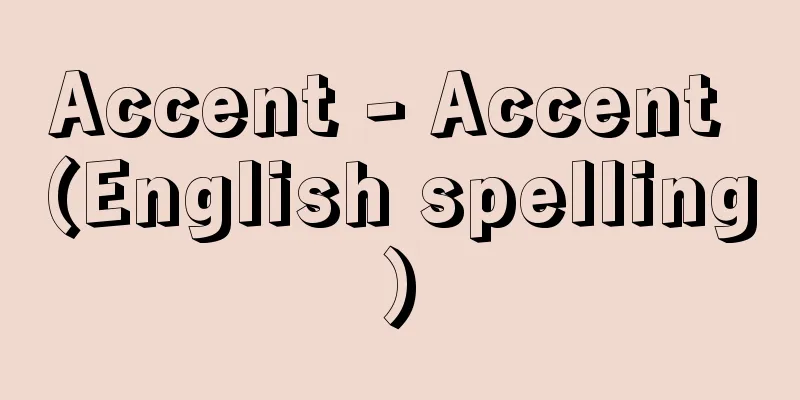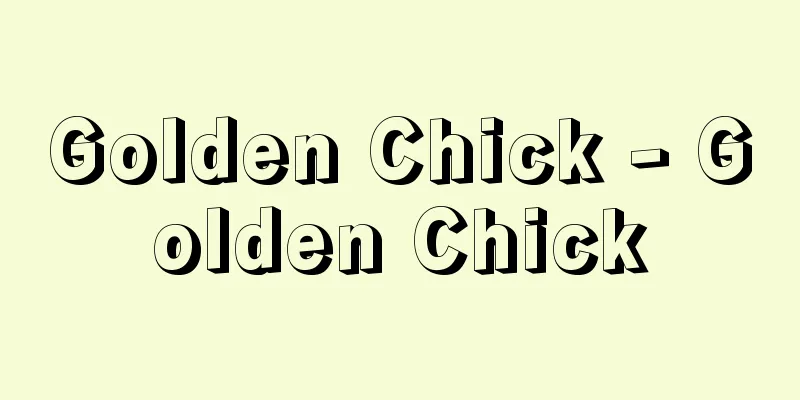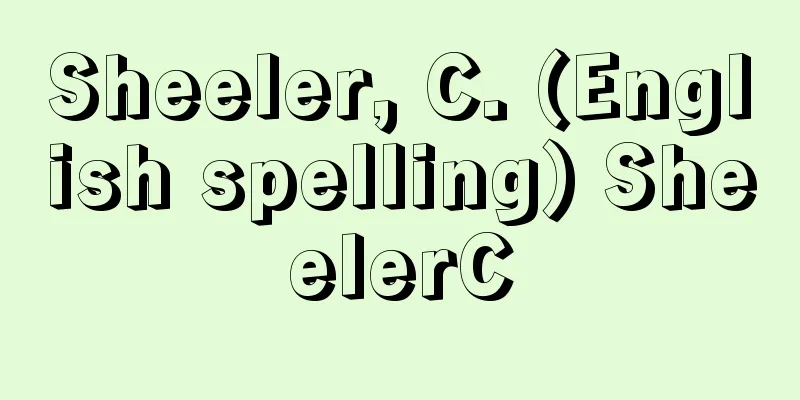Accent - Accent (English spelling)

|
It comes from the Latin accentus, originally a Greek word prosodya προσωδα. In general, it refers to a part of speech that sounds particularly high or strong, and in music, it refers to a part that is played strongly within a measure. By extension, it can also refer to the central, conspicuous part of clothing. In linguistics, when a certain syllable in a word is pronounced higher, or stronger, higher, and longer than the others, and this is a feature of the word, this is called an accent. While individual phonemes are called segmental features, accents are called suprasegmental features and are sometimes called "suprasegmental phonemes." In English, the "pér" in "pérmit" (license) or the "mít" in "permít" (permit) are pronounced stronger, and in the Tokyo dialect, the "a" in "ame" (rain) and the "me" in "ame " (candy) are pronounced stronger. In ancient Greek, the origin of the word, it indicated pitch accent. Later, it was used to refer to stress accent in modern European languages. In Japan, the ancient Chinese "shou" (four tones, etc.) was studied and applied to Japanese, but after the Meiji period, the term "accent" was used, and there are also cases where it is called "tone" or "tone". In English, word stress is often called stress. There are many examples of this to distinguish between nouns and verbs, but it is relatively rare for it to be useful for distinguishing meanings. In German, it is mainly on the first syllable, in Italian it is often on the penultimate syllable, and in French it is on the final syllable. In French, stress does not help distinguish the meaning of words. In these languages, stress helps to unite words, phrases, etc. into one. In English, German, French, Spanish, Italian, Russian, etc., it is called stress accent or dynamic accent, while in Japanese it is called pitch accent or musical accent. Chinese and Thai are also in the latter category, but because there are tone changes within one vowel, it is also called tone accent. However, the results of physiological and acoustic experiments have shown that, even in English accents, the most important factor in their production (speech) and perception (hearing) is the fundamental frequency of vocal cord vibration, that is, the change in pitch. In Japanese, the pitch change caused by each word accent tends to be maintained even in context. In English and other languages, only syllables with word accents that are emphasized in a sentence are pronounced particularly high, strong, and long, and the vowels are clearly pronounced. For this reason, accents are particularly important in conveying meaning. [Miyoko Sugito] Japanese AccentsThe smallest unit of accent is the beat (or mora), and this is generally indicated by kana characters. In the Kinki dialect, kyodai (brother) and inryoku (attraction) are examples where long vowels and mora (grip) are also used as units. The top of shows the Tokyo accent, which is currently considered standard Japanese, while the bottom shows the Kinki accent, which was once standard Japanese. When written, high points are indicated with a line, or a mark is used to separate high and low points. Sometimes each mora is indicated with a circle, and high points with a ●. The one-syllable word "e" (handle and picture) in Tokyo accent has different patterns, such as eganagai (long handle) and eokaku (draw a picture), and the two-syllable word " hana " (nose and flower) has different patterns, such as hanagatakai (high nose) and hanagasaita (flowers have bloomed), depending on whether the particle is high and flat or low. If the number of syllables in a word is n, then each syllable word has n+1 different patterns. Kinki accents are divided into high and low syllables, with 2n-1 types, and one- and two-syllable words with rising and falling syllables, such as e (picture), e (bait), and ame (rain). The geographical distribution of the Tokyo accent is wide, followed by the Kinki accent. In addition, in the southwestern part of Kyushu, there is a two-pattern accent area, where even polymorphic words have two patterns, and in the central part of Kyushu, the southeastern part of the Tohoku region, and the northeastern part of the Kanto region, there are areas with no pattern (so-called one-pattern accent) where the accent does not help distinguish between meanings. Based on ancient documents, it is possible to estimate that the Kinki accent dates back nearly 1,000 years. shows the ancient standard accent and the modern dialect accent. It is interesting to note that each word group has a corresponding relationship in terms of historical and regional changes. [Miyoko Sugito] "Kindaichi Haruhiko, 'Principles and Methods of Historical Research on Japanese Accent' (1974, Hanawa Shobo)" ▽ "Hirayama Teruo, 'Study of Japanese Tone' (1957, Meiji Shoin)" ▽ "Sugito Miyoko, 'Comparison of Accent and Intonation' (included in 'Japanese-English Comparative Lectures 1', 1980, Taishukan Shoten)" ▽ "Sugito Miyoko, 'Study of Japanese Accent' (1982, Sanseido)" [Supplementary Material] |©Shogakukan "> Accent distribution map ©Shogakukan "> Tokyo and Kinki (Osaka) accent type The table shows the correspondence between the words belonging to the first through fifth classes of two-syllable words and their ancient and modern accents . Ancient Standard Accents and Modern Dialect Accents Source: Shogakukan Encyclopedia Nipponica About Encyclopedia Nipponica Information | Legend |
|
もとギリシア語プロソーディアπροσωδαのラテン語訳アッケントゥスaccentusに由来する。一般には、ことばのなかでとくに高くあるいは強く聞こえる部分をいい、音楽では1小節内で強く演奏される部分をいう。転じて服飾などで中心となる目だつ部分をいうこともある。 言語学では、単語中のある特定の音節が他に比べて際だって高く、あるいは強く、高く、長く発音され、それが単語に備わった特徴であるとき、これをアクセントという。個々の語音を分節的特徴とよぶのに対して、アクセントは超分節的特徴とよばれ、「かぶせ音素」とよばれることもある。英語ではpérmit(免許証)のpér、またはpermít(許す)のmítを強くいい、東京方言ではアメ(雨)のア、アメ(飴)のメをそれぞれ高くいうとされるのが、それである。 語源の古代ギリシア語では高さアクセントを示した。のち、ヨーロッパ近代言語のいわゆる強さアクセントに用いる。日本では、古代中国の「声(ショウ)」(四声など)を学び、これを日本語の場合に応用したが、明治以後、アクセントの用語を用い、語調、音調などとよぶ例もある。 英語では単語アクセントをストレスstressとよぶことが多い。名詞と動詞の別を示す例は多いが、意味の区別に役だつことは比較的少ない。ドイツ語では、おもに第1音節に、イタリア語では多くは最後の一つ前の音節にあり、フランス語では末尾の音節にある。フランス語ではアクセントを単語の意味の区別に役だてない。これらの言語では、アクセントは単語、句などを一つにまとめるのに役だつ。英語、ドイツ語、フランス語、スペイン語、イタリア語、ロシア語などは強弱アクセントまたは強さアクセントstress accent,dynamic accentとされ、日本語は高低アクセントまたは高さアクセントpitch accent,musical accentといわれる。中国語、タイ語なども後者であるが、1母音内での音調変化があるため、声調アクセントともいう。 しかし生理的、音響的実験の結果によれば、英語アクセントにおいても、その生成(発話)と知覚(聞こえ)にもっとも重要な要素は、声帯振動の基本周波数、つまり高さの変化である。日本語では、各単語アクセントによる高低変化は、文脈中においても保たれる傾向がある。英語などでは文中で強調される単語アクセントのある音節だけがとくに高く、強く、長く、また母音が明確に発音される。このため、アクセントは意味の伝達上とくに重要である。 [杉藤美代子] 日本語のアクセントアクセントの最小単位は拍(またはモーラmora)、大まかには、かな文字がこれを示す。近畿方言のキョオダイ(兄弟)、インリョク(引力)は長音、撥音(はつおん)も単位となる例である。の上部は、現在の標準語とされる東京アクセントを、下部はかつての標準語であった近畿アクセントを示す。表記は高い部分を線で示し、または高低のくぎりに「印」を用いる。各拍を○印で、高い部分を●で示す場合もある。 東京アクセントの1拍語「エ」(柄と絵)は、エガナガイ(柄が長い)、エオカク(絵を書く)のように、また2拍語「ハナ」(鼻と花)はハナガタカイ(鼻が高い)、ハナガサイタ(花が咲いた)のように、助詞が高く、平らにつくか、または低くつくかにより、型が異なる。単語の拍数をnとすれば、各拍単語にはn+1種類の型がある。近畿アクセントには高起と低起の別があり、2n-1種類のうえに1、2拍語では上昇し、下降する絵(エ)、餌(エ)、雨(アメ)などがある。 東京アクセントの地理的分布は広く、近畿アクセントがこれに次ぐ。ほかに九州の南西部に、多拍語まで2種の型をもつ二型アクセント地域があり、九州中央部と、東北地方の南東部および関東の北東部に、アクセントが意味の区別に役だたない無型アクセント(いわゆる一型アクセント)地域がある。 近畿アクセントは、古文献により、1000年近い昔のそれが推定できる。には古代の標準語アクセントと、現代の方言アクセントを示した。各単語群が史的、地域的変化において対応関係のあることは興味深い。 [杉藤美代子] 『金田一春彦著『国語アクセントの史的研究原理と方法』(1974・塙書房)』▽『平山輝男著『日本語音調の研究』(1957・明治書院)』▽『杉藤美代子「アクセント、イントネーションの比較」(『日英比較講座1』1980・大修館書店・所収)』▽『杉藤美代子著『日本語アクセントの研究』(1982・三省堂)』 [補完資料] |©Shogakukan"> アクセントの全国分布図 ©Shogakukan"> 東京および近畿(大阪)アクセントの型の… 表は、2拍語における第1類から第5類までの所属単語と古代および現代アクセントの対応関係を示す©Shogakukan"> 古代の標準語アクセントと現代の方言アク… 出典 小学館 日本大百科全書(ニッポニカ)日本大百科全書(ニッポニカ)について 情報 | 凡例 |
Recommend
Tricyrtis formosana (English spelling)
…[Hiroshi Takahashi]. … *Some of the terminology ...
Galacturonic acid
C6H10O7 ( mw194.14) . It is a uronic acid formed b...
Tolbert, WR
...He also mediated between rival factions in the...
Jean Genet
French novelist, playwright, and poet. Born in a ...
Septuagint - The Septuagint
Today, it is a collective term for the Greek tran...
Shodoshima Mikage - Shodoshima Mikage
The name of a type of granite found on the northea...
Forced circulation water tube boiler
…The reason for the increased height is to compen...
Collection of Buddhist Stories
The teachings of Shakyamuni and his direct discipl...
External diameter limit gauge - External diameter limit gauge
...Thread plug gauges are used to check the pitch...
Munro Leaf
American children's author. Born in Maryland,...
Malope trifida (English spelling)
…It was introduced to Japan long ago during the E...
Enkan
A Tendai Buddhist monk, his given name was Echin ...
Willem de Kooning
1904‐97 American painter and a leading figure in A...
Rove beetle (stolid) - rove beetle
A general term for insects belonging to the family...
Schumacher, K.
… [Masao Nishikawa] [Postwar] After the defeat of...









